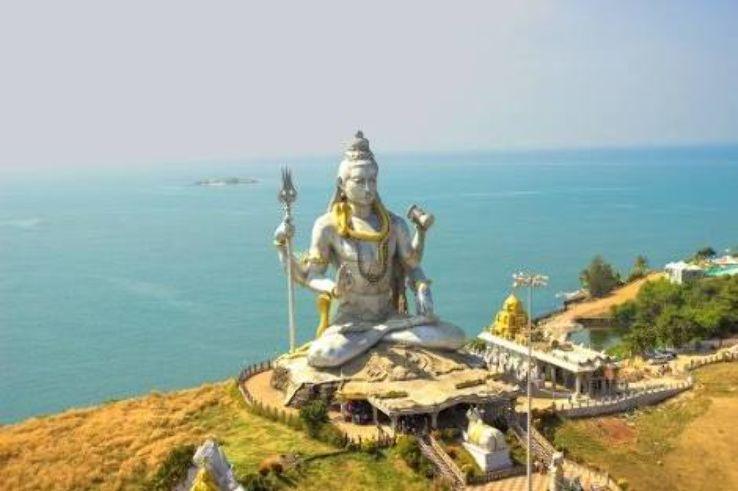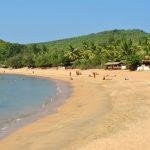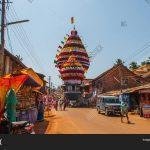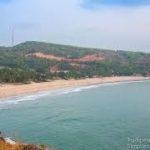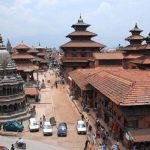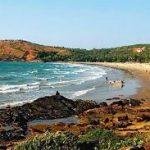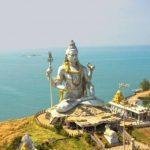Contents
Gokarna, Uttara Kannada, Karnataka
| Date built: | – |
|---|---|
| Deity: | – |
| Architectural style: | – |
| Major festivals | – |
| Locale: | – |
| District:: | Uttara Kannada |
| Address: | – |
| Phone | – |
Gokarna is a small temple town on the western coast of India in the Kumta taluk of Uttara Kannada district of the state of Karnataka.The main temple and deity is Lord Shiva, who is also known as Mahabaleshwara. This temple houses what is believed to be original image of Lord Shiva’s linga (Atmalinga). There are many other temples all over this small town. Ankola and Kumta on NH66 are the main towns near Gokarna and Bhatkal and Karwar are the main cities near Gokarna where almost all trains stops.
Gokarna is known as one of the seven important Hindu pilgrimage centers. It is on what was once an unspoiled beach near the estuary of the river Aghanashini. Recently, due to the influx of tourists, the character of the town has changed; it is no longer just a centre of pilgrimage, though large numbers of devotees visit to offer prayers and worship to Lord Shiva.
Due to its laid-back, unspoiled and rustic nature many younger western tourists started visiting Gokarna about a decade ago. The beaches around Gokarna were hardly used by the locals until these mainly western tourists started coming.Enterprising locals started stores and restaurants, and now the resorts also cater to wealthier tourists.
Architecture
Legend / Local stories
The earliest history of the city is in Tretayuga, Ravana (Demon/Asura King of Lanka) reaches Kailasa and performed rigorous penance to get the “Atma Linga” from Lord Shiva, as Ravana’s mother expressed a keen desire to worship the atmalinga of Lord Shiva.[5][6] After a long penance, Shiva gave the Atma linga to Ravana as a boon and instructs Ravana to carry it home by walk, that he should never place it on the earth even for a short while failing which the linga would get eternally embedded at the place where he broke his commands.
Lord Maha Vishnu learned that Ravana will become all powerful by worshipping the ‘Atma Linga’ and menace to the world and Ravana’s conviction that nobody could defeat him, once he acquired the very power of Shiva. Maha vishnu devised a plan to install the linga somewhere and as he thought that Lord Ganapati was alone capable of doing it, he along with all the gods pleased Ganapati to execute the plan. Lord Ganapati accepts and reaches Gokarna as a Brahmin boy.
As Ravana was nearing Gokarna, Maha Vishnu who had known well that Ravana was punctual in performing his periodical rites (Sandyavandhana), hides sun with his Sudarshana Chakra (Wheel). Thinking that it was time to perform the evening rites, Ravana finds a Brahmin boy and asked him to hold the Atmalinga in his hand till he came back after finishing the rites. Ganapati agreed to hold the linga on one condition that he would do so till he would be able to bear the weight of linga and that thereafter he would call Ravana three times and if failed to come to him by then he would place the linga on the earth.
Ganapati calls Ravana three times when he was performing his rites and places the linga on the earth and he vanished. The Atmalinga at once got firmly entrenched in the earth. Ravana learned that he had been tricked by the Gods. The depressed demon king Ravana was deeply agitated and tried to pull up the linga, but the linga did not budge a little. It resulted in his throwing the coverings of the Linga to Dhareshwara, Gunavanteshwara, Murudeshwara and Shejjeshwar temples. Ravana was unable to lift the linga from the ground again and called the Shiva linga as Mahabala, one with great strength, and ever since, the linga illustrious as Mahabaleshwara. Shiva learned all these from Vayu Deva, the god of wind, and came on to Earth with Goddess Parvathi devi and his train of Gods, he visited these five places and worshipped the linga which had now taken five forms. He acknowledged that these five places would be his “Pancha Kshetras” (Five Holy Places)
A sect of Brahmins fled from the Gomantak to escape forcible conversions by the Portuguese and British and settled in and around Gokarna in the 15th century. It was part of the Sodhe and Vijayanagar kingdoms. When the Konkan region — including Goa — was occupied by the Portuguese, it became part of their rule. A few temples were destroyed by the Portuguese in 1714, rebuilt in the 18th century, and under the supervision of Guru H. H. Shrimad Anandashram Swamiji in 1928.
Photo Gallery
How to Reach:
Contact Details
Official Address

